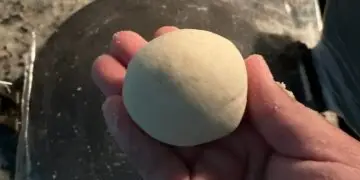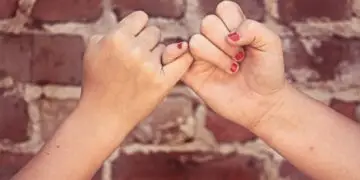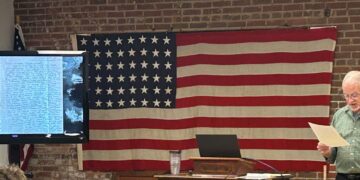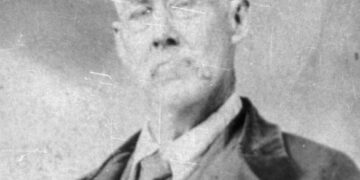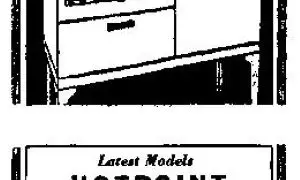 Hello to all you connoisseurs of print out there. This has been a most enjoyable baseball summer and the fun will continue into October for me! Making an appearance in the MLB playoffs for the first time since 2014, the Baltimore Orioles. Just a few regular season games left to clinch a division title and then on to the World Series? Can the 40-year drought finally be broken? One can only hope. I was able to check off stadium number seven with a visit to Progressive Field in Cleveland over the Labor Day weekend. Well worth the trip. Last month, I got a little long winded in looking at the mid 1990’s early 2000’s era. In part two, let’s look at the 1999 home run chase during the “steroid” era and the impact on the MLB record book.
Hello to all you connoisseurs of print out there. This has been a most enjoyable baseball summer and the fun will continue into October for me! Making an appearance in the MLB playoffs for the first time since 2014, the Baltimore Orioles. Just a few regular season games left to clinch a division title and then on to the World Series? Can the 40-year drought finally be broken? One can only hope. I was able to check off stadium number seven with a visit to Progressive Field in Cleveland over the Labor Day weekend. Well worth the trip. Last month, I got a little long winded in looking at the mid 1990’s early 2000’s era. In part two, let’s look at the 1999 home run chase during the “steroid” era and the impact on the MLB record book.
The single season home run record is one of the most hallowed records in MLB. Fittingly, it was held for 34 years by the greatest baseball player and slugger of all, Babe Ruth. The Sultan of Swat sometimes hit more home runs in a season than entire teams. He first set the record at 29, then increased it to 54 and then 59. Finally, in 1927, he put up the astounding stat line of a .356 batting average, 60 home runs, and 165 RBI’s. Upon hitting his 60th home run of the season, the ever-quotable Babe announced “Sixty! Count ‘em 60! Let’s see some other SOB match that!” There wasn’t another SOB that came close for 34 years.
Was it just coincidence that in 1961, two other Yankee sluggers named Mantle and Maris would chase after an “unbreakable” record? Maris would be the one to break the Babe’s mark, hitting his 61st on the last day of the season, ending a pursuit that was excruciating for him under the hot glare of the media and the fans. The hair that fell out in clumps from the stress would eventually grow back. It would take 37 years before a man of similar temperament would give chase to baseball’s most sought after record. This player also had another slugger chasing right along with him.
Mark McGuire took the MLB by storm right out of the gate in his rookie year, hitting 49 home runs to set the record for a first-year player. He was a perennial All Star and helped lead the Oakland A’s to a World Series title in 1989. McGuire started suffering from a vast array of injuries including a torn left heel muscle and a stress fracture of the same heel, a cracked rib, and a torn right heel muscle. He decided to start taking performance enhancing drugs (PED’s) to help recover from his injuries. McGuire had previously dabbled with the substances in the late 1980’s. There wasn’t any rule prohibiting the use of PED’s in MLB. Every other professional sports league had rules and testing in place because of the athletic advantage they provided. McGuire, after being injured and limited to just a handful of games the three previous seasons, started to hit many home runs again. The difference was that the balls were flying into parts of the ballpark that had never been visited before. He also looked like a bodybuilder with massive arms, chest, and legs that baseball players didn’t usually have. To be fair, you can’t just take PED’s and have muscles magically appear. You must put the work in by visiting the gym daily to lift weights. In 1996, McGuire hit 52 home runs, a new record for him. The next year, he hit 58, putting him four home runs away from breaking the single season mark. He put on even more muscle, making him look like a modern-day Paul Bunyan.
Sammy Sosa was the other participant in the great home run chase of 1998. Sosa started in the big leagues as a skinny outfielder for the Chicago White Sox. He was traded to the crosstown Cubs in 1991. He was mainly a player off the bench until he discovered the weight room in 1993 when he hit 33 home runs, a massive improvement from seasons past. The next few years, he was a consistent producer of 30 or more home runs a season, topping out at 40 in 1996.
Sosa reported for spring training in 1998. His teammates were astonished when he took off his shirt. It looked like he had added 25 pounds of muscle in the off season. He never has admitted to taking PED’s and there wasn’t any testing. You will have to be the judge.
McGuire started out 1998 on fire, homering in his first four games and continuing to hit moon shots all through April and May. He hit 27 home runs by June 1, putting him on pace to smash the record. Sosa only managed 13 in April and May. June was the month he caught fire, smashing a record 20 home runs to put him at 33, not far behind McGuire at 37. By the end of August with one month left in the season, the two sluggers were tied at 55. Only seven more home runs were needed to break the record. McGuire rocketed out of the gate in September, hitting 4 in the first 2 games of the month. On the 8th day of the month, McGuire broke the record with his 62nd against the Cubs. Sosa, in a gesture of sportsmanship, ran in from right field to embrace McGuire in congratulations. The race was far from over. Sosa hit his 62nd a week later to tie McGuire once again. Sosa hit number 66 on September 25th to briefly hold the record. That would be his last one of 1998. McGuire would hit 5 more the last weekend of the season, hitting number 70 in the final game. The home run chase was widely credited with bringing back national interest in baseball after the 1994 strike. However, there were lots of sports writers and other players that were quite suspicious of the legitimacy of the new record. McGuire once again broke the old record the following year when he again led the league with 65 home runs in 1999. Sosa hit 63 to finish second once again. McGuire played through two more injury plagued seasons and retired in 2001. Sosa hit 64 in 2001, right before MLB finally gave into the pressure and started testing players for PED’s. Sosa never hit more than 40 after testing began and retired in 2005. I hope that some of you find this topic and timeframe interesting. To properly finish this story, there will have to be a part 3 next month. I will leave you with a quote from the great Babe Ruth. “The way a team plays as a whole determines its success. You may have the greatest bunch of individual stars in the world, but if they don’t play together, the club won’t be worth a dime.”





